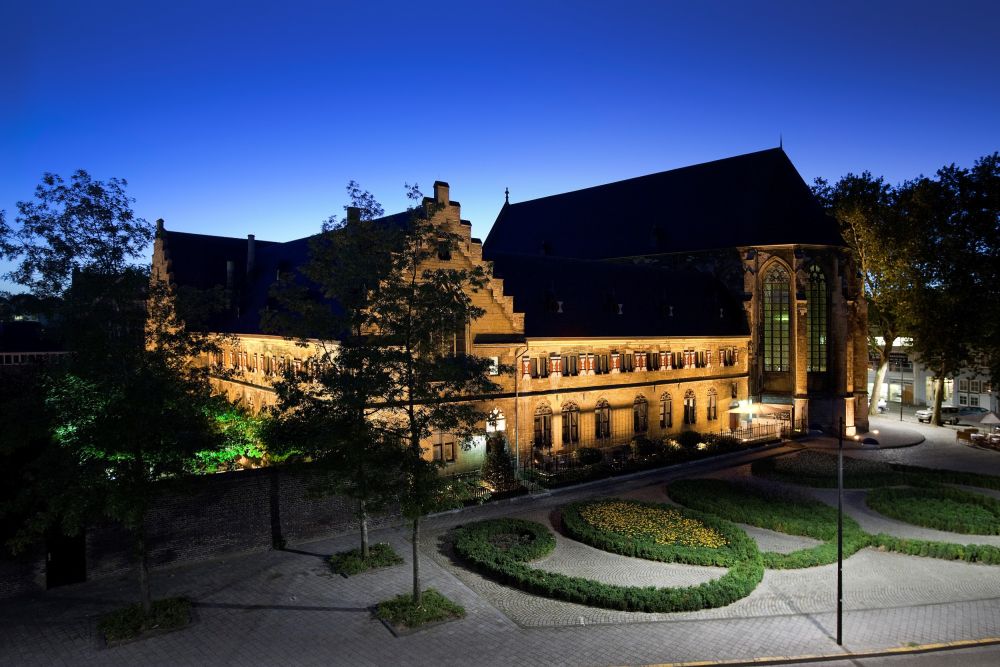Discover the impressive history of Kruisherenhotel Maastricht
Dating back to the 15th century, the Kruisheren cloister and gothic church has a fascinating story
The Kruisheren Cloister is nowadays known of being a luxury 5-star hotel. However, the Kruisherenhotel Maastricht has an interesting history dating back to the year 1440 as contruction of the Cloister began. From that point in time, the story begins that the Kruisherenhotel Maastricht currently is still telling their guests.


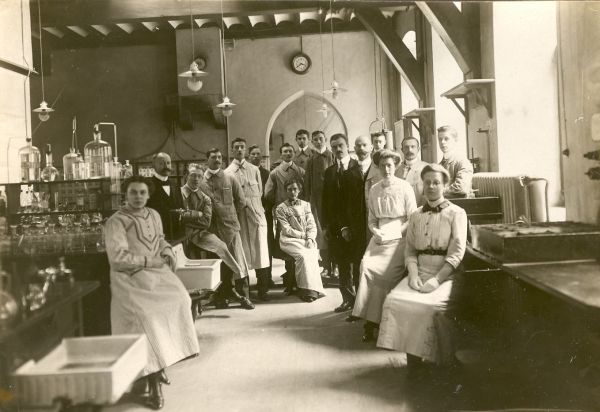
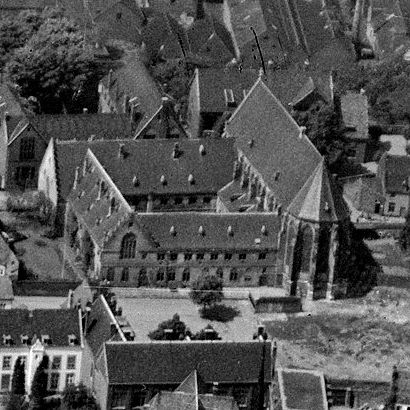
A glimpse of Kruisherenhotel's history
Construction began on the Kruisheren cloister in 1440, after an important Maastricht-based patron, Edidius van Elderen, donated the land to the Order of the Holy Cross. Although the church’s extravagant chancel was finished by 1459, the entire complex was built over several decades, with the current buildings standing today, completed around 1520.
The Order of the Holy Cross (also known as the Crutched Friars) was highly respected within Maastricht. Originally they wrote, copied and bound books, however, later united other local, monastic communities to care for the poor and sick. The Friars resided at the Kruisheren until 1797 when they were forced out in order to turn the buildings into a military barracks and arms storage during the French Revolution.
It wasn’t until the end of the 19th century that an initial restoration project was commenced under the orders of Dutch cultural aficionado, Victor de Stuers, together with the architect Cuypers. Over the 20th century the buildings took on various guises, such as housing a National Agricultural Research Station and acting as temporary parish church during the restoration of the Basilica of St Servaas.
In late 2000, the Kruisheren was purchased by Camille Oostwegel ChateâuHotels & -Restaurants and ambitious renovations commenced. The transformed Kruisherenhotel Maastricht was opened in 2005 as a luxury, design hotel that strikes a thoughtful balance between the past and present.
In May 2017 a new chapter was added to the history of the Kruisherenhotel Maastricht. As the first hotel in Limburg, the hotel received its fifth hotel star and won the “Dutch Hotel Award 2017”.
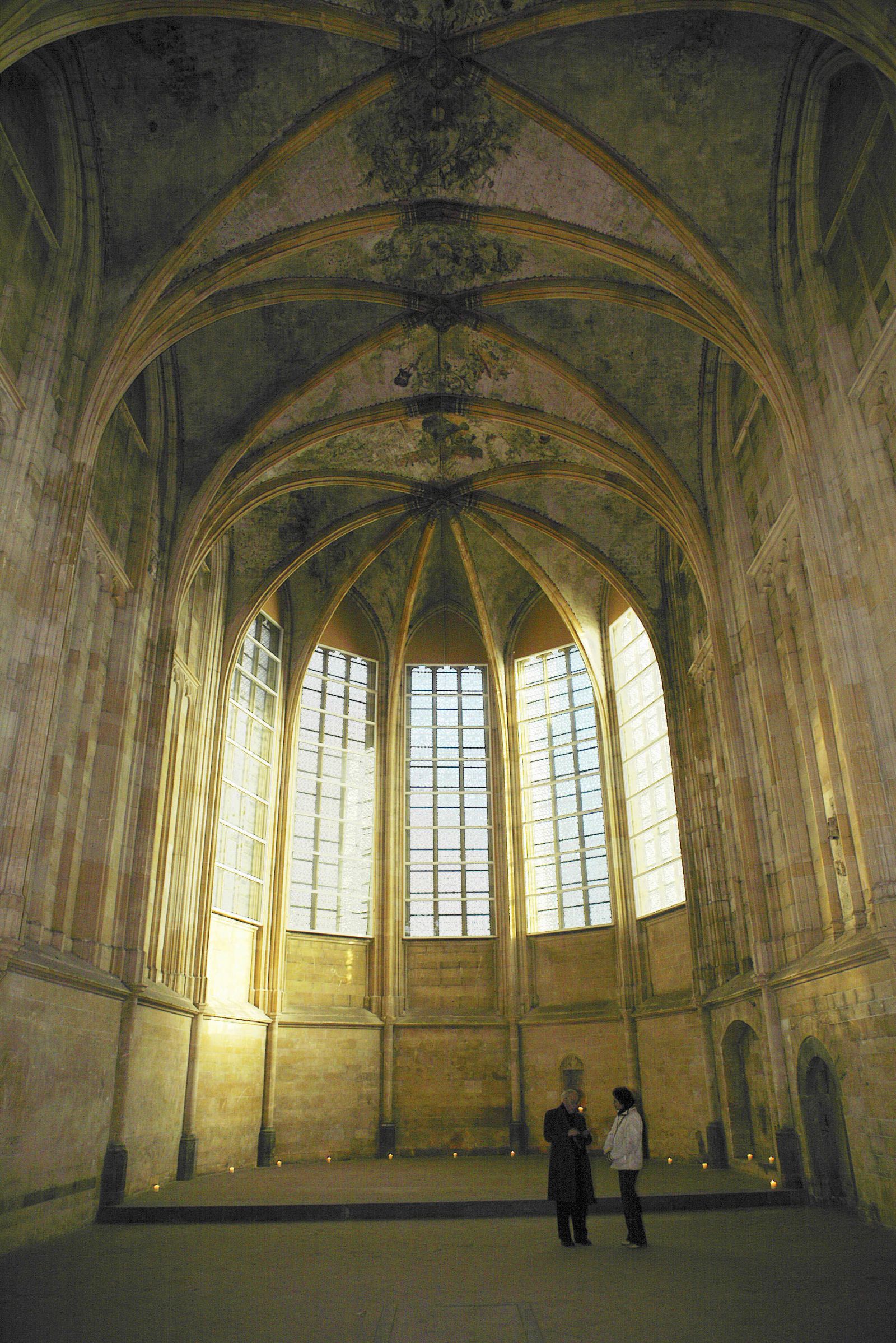
A diverse lifetime
The Kruisheren Cloister had several habitants and purposes before becoming the Kruisherenhotel Maastricht we all know nowadays. From the first stone being placed to becoming the first 5-star hotel of Limburg, this is Kruisherenhotel's history step by step in a nutshell.
Construction history
The first stone of the monastery church was laid in 1440. Petrus Toom and Johannes van Haeren were mentioned as architects (or master builders). In 1459 the choir was finished but it was not consecrated until 1470. In 1462 and again in 1480 the clock tower (or perhaps a ridge turret) was destroyed in a storm. It was replaced by a smaller ridge turret. After a prolonged break, construction continued in 1501 under prior Walterus Beckers of Herentals. The nave and aisles were finished in 1509.
The first section of the new monastery, the east wing, was built in 1480-81. This part housed the sacristy, the chapter hall and a temporary refectory. In 1495 construction of the west wing commenced. The ground floor with the new, permanent refectory was finished in 1500; the upper floor with cells for the friars around 1520. The old refectory became the library, as well as the prior’s quarters and a guesthouse. The south wing was finished last by prior Mathias Mijnecom (1517-27) after the old brewery and bakery had been destroyed by fire. Around 1520 the church and monastery had the extent and the appearance that it would keep for the next 500 years.
Monastic life
The Maastricht Crosiers started in 1438 with four friars. In 1468 there were 15; in 1483 this had increased to 23. In 1500, the Maastricht monastery was among the larger foundations of the order. The fifth prior, Walterus of Herentals (1483-1517), accepted 24 new priests, many of whom came from Maastricht.
The Crutched Friars were canons regular, living a communal life according to the Rule of St. Augustine. Their first task was to pray and sing the Liturgy of the Hours. Several of them served as priests in nunneries or third order monasteries in Maastricht, such as the Canonesses Regular of the Holy Sepulchre (Bonnefantenklooster), the Third Order Grey Sisters (Grauwzustersklooster), the Third Order Sisters of St Andrew (Sint-Andriesklooster) and the Alexians (Cellebroedersklooster), or in parish churches in Maastricht or nearby villages, such as Vlijtingen, Bolbeek and Haccourt. Other friars worked as copyists and illuminators of manuscripts, or bookbinders, later also as printers. Others worked in hospitality (the monastery offered accommodation to lay people; the elderly could ‘buy themselves into the monastery’) or nursing (as during the plague epidemics of 1529 and 1579). A further source of income were mass stipends, as well as the sale of burial rights in the church (for which the church was known). Over the centuries the Croziers got ever wealthier because of the accumulation of property that people left to them. Most of this property (or income from real estate) was located in the vicinity of Maastricht, mostly in the border region with Belgium.
The Fraternity of the Holy Cross seems to have existed from 1439 until 1579; after that there is no mention of it. Another fraternity was founded around 1510 and lasted till the dissolution of the monastery. It was devoted to the patron saint of the Crosiers, Saint Michael. The fraternities had their own altars in the Crosier church. The Fraternity of Saint Michael possibly ordered a wooden statue of Saint Michael from the famous wood sculptor Jan van Steffeswert in 1512.
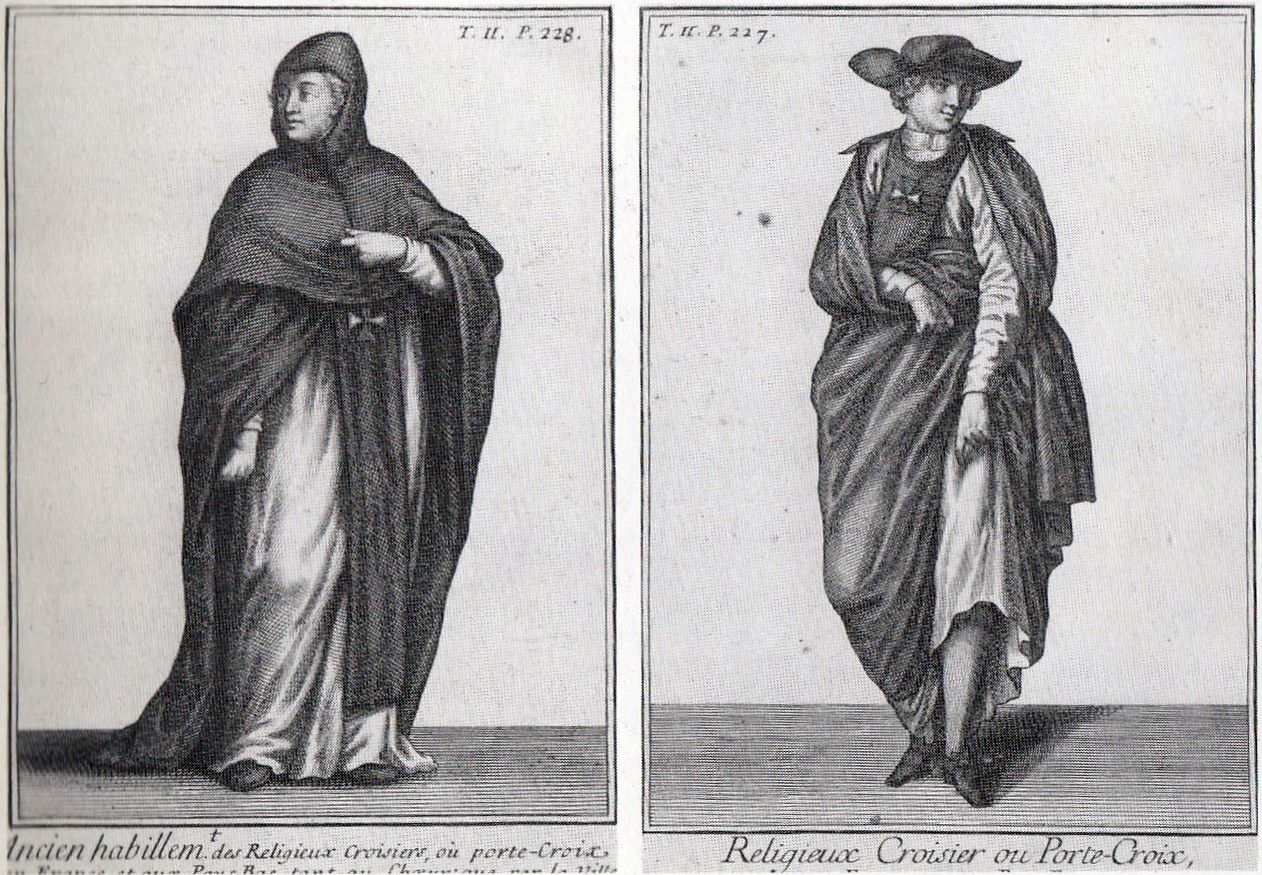
Degradation
The monastery was frequently damaged during sieges due to its elevated location near the western city wall. The monastery suffered particularly during the Eighty Years’ War. During the Siege of Maastricht (1579) many Crutched Friars died; those that survived perished during the ensuing plague epidemic. For a while the monastery remained uninhabited. In 1581 prior Hubertus of Stavelot sold some of the Crosiers’ possessions in order to pay for the repair of the monastery buildings (including the partial renewal of the church’s vaults). In 1582 the books that had been shipped to Aachen for safety, returned to Maastricht. After this, the monastery would not reach the same level of prosperity that it had enjoyed before. Where it had previously 25 or more friars, in 1615 it had only 9, and throughout the 17th and 18th century it would never exceed 15.
In 1629 a high ransom was paid for prior Martinus Pauli who had been captured by Dutch militia near Liège and was kept prisoner in Emmerich. More wartime hardship came with the Capture of Maastricht by the Dutch in 1632 and the Capture by the French in 1673. After the siege of 1673, Louis XIV of France donated 2100 guilders to the monastery for repairs. After the French left in 1678, the monastery suffered from forced billeting of the Dutch garrison.
Worldly influence entered the monastery in the 18th century. This became apparent with the wearing of wigs and more fashionable cloths (see drawing above). The enthusiasm of the Counter-Reformation had dwindled, as was the case in other monasteries in Maastricht. The spiritual influence of the Crosiers on their surroundings was negligible, both in Maastricht and elsewhere. Several monasteries were forced to close for lack of monks. In Maastricht, only ten Crutched Friars took holy orders between 1760 and 1796.
Dissolution of the monastery; military use
The Capture of Maastricht by the French general Kléber in 1794 and the ensuing incorporation of the city in the French First Republic meant the end of all monasteries in Maastricht. In 1796 the Maastricht Crosier Monastery was dissolved. The eight priests and two friars that remained were forced to leave the monastery within one year. Under French law, those that wanted to remain active as priests had to swear the so-called Oath of Hatred (towards the monarchy and anarchy). Apparently six Maastricht Crosiers refused to do so. As a result they were deported to the penal colony Cayenne. One fled to Germany, another was allowed to return home after he got sick during the voyage, and others were pardoned after interference by the Francophile barrister Charles Roemers.
The former monastery buildings were given a military purpose as an arsenal and barracks for the French troops. When the French left in 1814, the Dutch garrison took over the buildings. They were used as barracks, storage for military clothing and the garrison’s bakery. Although the former monastery was owned by the city of Maastricht, it was the Ministry of War that decided how it was to be used. When the city housed a cholera clinic in one of the wings, it was told that this was not in accordance with the military purpose.
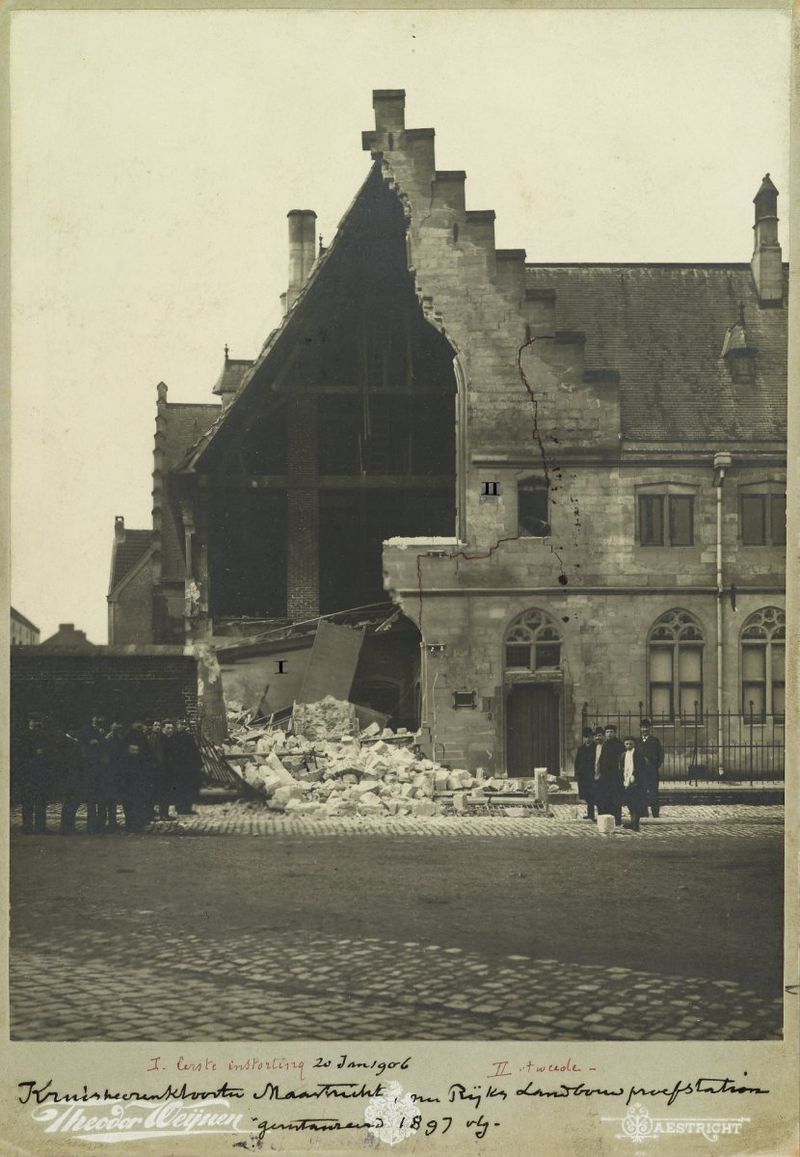
Agricultural testing station; other uses
In the late 19th century Victor de Stuers was concerned about the rapidly decaying monastery. Through his contacts with the government in The Hague he managed to find funding for the renovation of the building that was to be given a new purpose. From 1897 onward, the National Agricultural Testing Station (“Rijkslandbouwproefstation”) gradually moved into the monastery wings, after restoration by chief government architect Jacobus van Lokhorst. In 1906 part of the east wing collapsed during restoration work.
During and after the Second World War the church was first used by the German occupiers, then by the American liberators and finally by a Dutch organisation that helped to recuperate lost possessions after the war (Nederlandse Beheersinstituut).
The Maastricht testing station initially did agricultural research for the southern provinces of the Netherlands. It was gradually given additional tasks, as for example the national research on fertilisers and on cattle feed. In 1947 the Crozier church was added to its premises and in 1953 a wooden shed was built into the church, making extra room for laboratories. During the eighty years that the institution was based in Maastricht it always remained an outsider. Most of its personnel came from outside the region. The former monastery buildings were fenced off and remained an alien body in the city. In the late 1970s the institution was moved in phases to Wageningen, closer to the agricultural university there.
The city of Maastricht once again took charge of the buildings around 1980. From 1985-90 the church was used as a temporary parish church for the parish of St. Servatius, whose own church underwent restoration. The church was then used by Opera Zuid for storage and rehearsal studios. Parts of the monastery were briefly occupied by squatters.
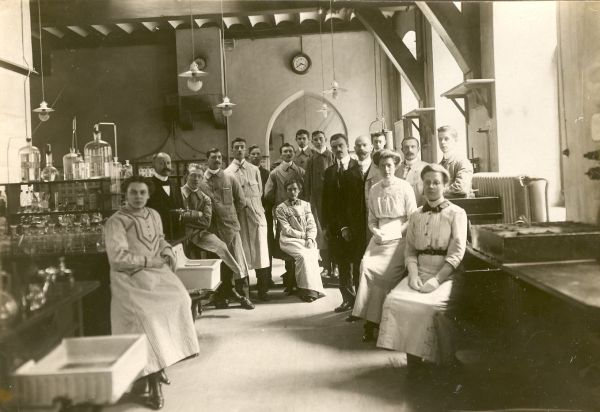
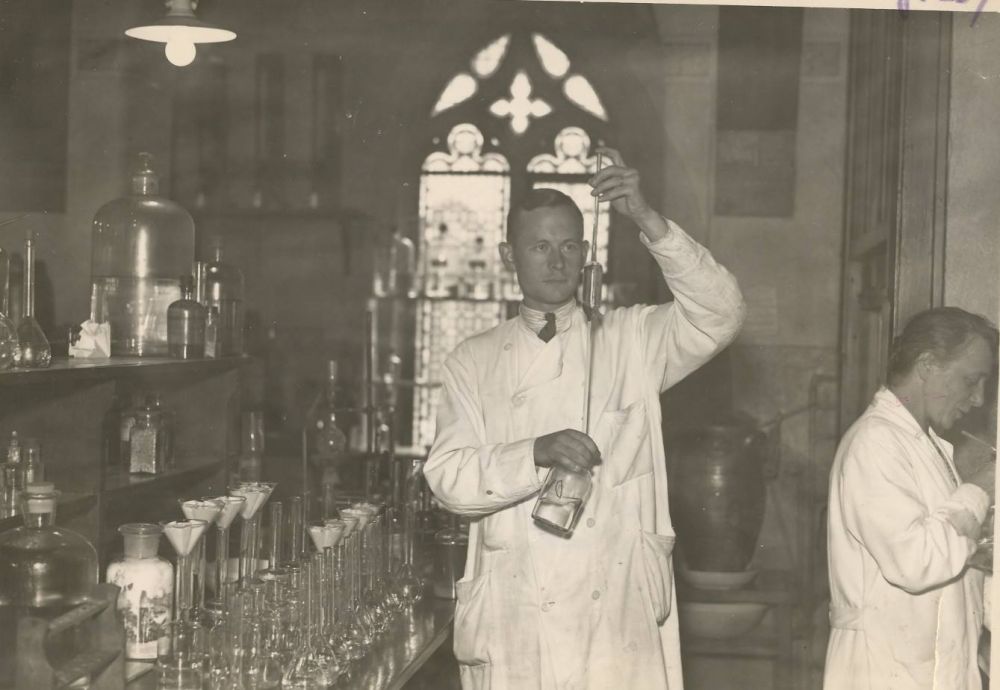
Current destination: Kruisherenhotel Maastricht
In 2000 the city of Maastricht sold the complex to Camille Oostwegel, who already owned several luxury hotels and restaurants in the South Limburg region. In 2003-05 the buildings were renovated and re-purposed to house a luxury design hotel with 60 rooms. The renovations were led by Rob Brouwers of SATIJNplus architects. As the building is a rijksmonument, all constructive elements such as the two mezzanines in the church, as well as the entrances, walkways, glass elevators, reception areas and toilets had to be reversible (‘box in box’ principle). German designer Ingo Maurer added a copper tunnel entrance on the north side. Maurer also designed several light sculptures for the cloister yard and the church interior.
At the opening ceremony of the Kruisherenhotel on 1 september 2005, the superior general of the Crosier Order, Rein Vaanhold, said in his speech that the new purpose of the building was consistent with its historical function: making guests feel welcome. The hotel received the bi-annual Monument Prize of the Municipality of Maastricht (the Victor de Stuers medal) in 2005. Also in 2005, interior designer Henk Vos received the European Design Award for his daring design of the hotel interior. In 2011 it was named “hotel of the year” in the Dutch edition of the Gault Millau guide. In 2017 the hotel was officially recognized as a five-star hotel by European Hotel Classification, the only five-star hotel in Limburg.


